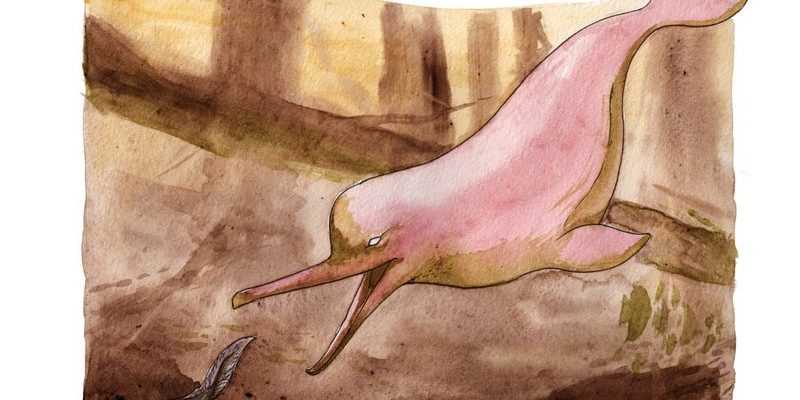
The Amazon river dolphin, known for its distinctive pink hue, is much more than just a charming water-dweller. As we explore their evolutionary journey, you’ll uncover how these dolphins adapted to survive in the unique environment of the Amazon River, which is like a watery maze filled with challenges and beauty. So, grab your virtual life jacket, and let’s dive in!
The Origins of the Amazon River Dolphin
To understand the evolutionary journey of the Amazon river dolphin, we need to travel back millions of years. These dolphins belong to the family Iniidae, which branches off from a group of ancient marine mammals. Their ancestors were once ocean-dwelling species that roamed the seas. Over time, some of these ancestors ventured into rivers and freshwater habitats, adapting to these new environments.
This shift wasn’t just a casual stroll into shallower waters. The transition involved significant changes in body structure and behavior. Over time, those early dolphins developed traits suited for life in the river. For instance, they evolved smaller dorsal fins and more flexible bodies to navigate through tight spaces in riverine environments. Imagine a sea creature transforming into an agile river acrobat—this incredible change happened over millions of years!
Unique Adaptations for Freshwater Life
One of the most remarkable aspects of the Amazon river dolphin is their unique adaptations. These dolphins have evolved to thrive in murky waters, where visibility is often low. Their impressive echolocation ability allows them to “see” their surroundings using sound waves. Essentially, they send out sounds that bounce off objects, helping them to find fish, navigate, and even communicate with one another.
You might be wondering why this adaptation is important. The Amazon River is full of twists and turns, and the water can be muddy, especially during rainy seasons. Thanks to echolocation, botos can hunt effectively in this environment, locating prey without relying on sight. Imagine being able to “see” with your ears—how cool is that?
The Role of the Amazon River Dolphin in Ecosystems
Besides being fascinating creatures, Amazon river dolphins play a crucial role in their ecosystem. As apex predators, they help maintain the balance of fish populations. By hunting various species, they ensure that no single species dominates, which keeps the ecosystem diverse and healthy.
Furthermore, their presence in the river also indicates the overall health of the Amazon’s aquatic environment. Just like how canaries were used in coal mines to signal danger, these dolphins can signal changes in the river’s health. If their population declines, it may hint at environmental issues like pollution or habitat destruction. This is why monitoring their populations is vital for conservation efforts.
Behavior and Social Structure
You might have heard that dolphins are social animals, and Amazon river dolphins are no exception. They tend to be playful and curious, often seen interacting with one another in their natural habitat. They communicate through a range of sounds, including clicks, whistles, and even body language.
Botos often form small pods, usually consisting of a few individuals. However, unlike some oceanic dolphins that form tight-knit family groups, Amazon river dolphins tend to be more solitary. They might come together to socialize or hunt, but they are more independent than their ocean cousins. This behavior is likely linked to their environment, where food resources may be spread out.
Threats to Their Survival
Despite their incredible adaptability, Amazon river dolphins face several threats that jeopardize their survival. One of the most pressing issues is habitat destruction. Deforestation in the Amazon for agriculture and logging disrupts their natural habitats, leading to loss of food sources and breeding grounds.
Additionally, pollution is a significant concern. Chemicals, plastics, and waste entering the river can adversely affect the health of these dolphins and their prey. Fishing practices also pose a threat; accidental entanglement in fishing nets can lead to injury or death.
It’s crucial that we recognize these dangers and work towards conservation efforts. Protecting the Amazon river dolphin means protecting the health of the entire ecosystem.
Conservation Efforts and Future Outlook
Conservationists and researchers are working hard to ensure the survival of the Amazon river dolphin. There are various initiatives focused on habitat protection, public awareness campaigns, and research programs aimed at understanding their behavior and population dynamics better.
For instance, some organizations are advocating for stricter regulations around fishing practices and promoting sustainable agriculture to reduce habitat destruction. Ongoing research helps to monitor populations and assess the health of their environments, which is essential for effective conservation strategies.
There’s hope for the future, but it requires collective effort. By supporting conservation initiatives and raising awareness about the challenges these dolphins face, we can help ensure their survival for generations to come.
The evolutionary journey of the Amazon river dolphin is a testament to nature’s resilience and adaptability. From their ancient ancestors in the oceans to their unique adaptations for life in the Amazon, these dolphins are truly remarkable creatures.
However, with their survival at stake due to environmental challenges, it’s more important than ever to take action. By understanding their journey and the threats they face, we can become advocates for their protection. So, the next time you think about the Amazon, remember the botos swimming through its waters and the vital role they play in this extraordinary ecosystem. Let’s make sure they continue to thrive in their watery home!

